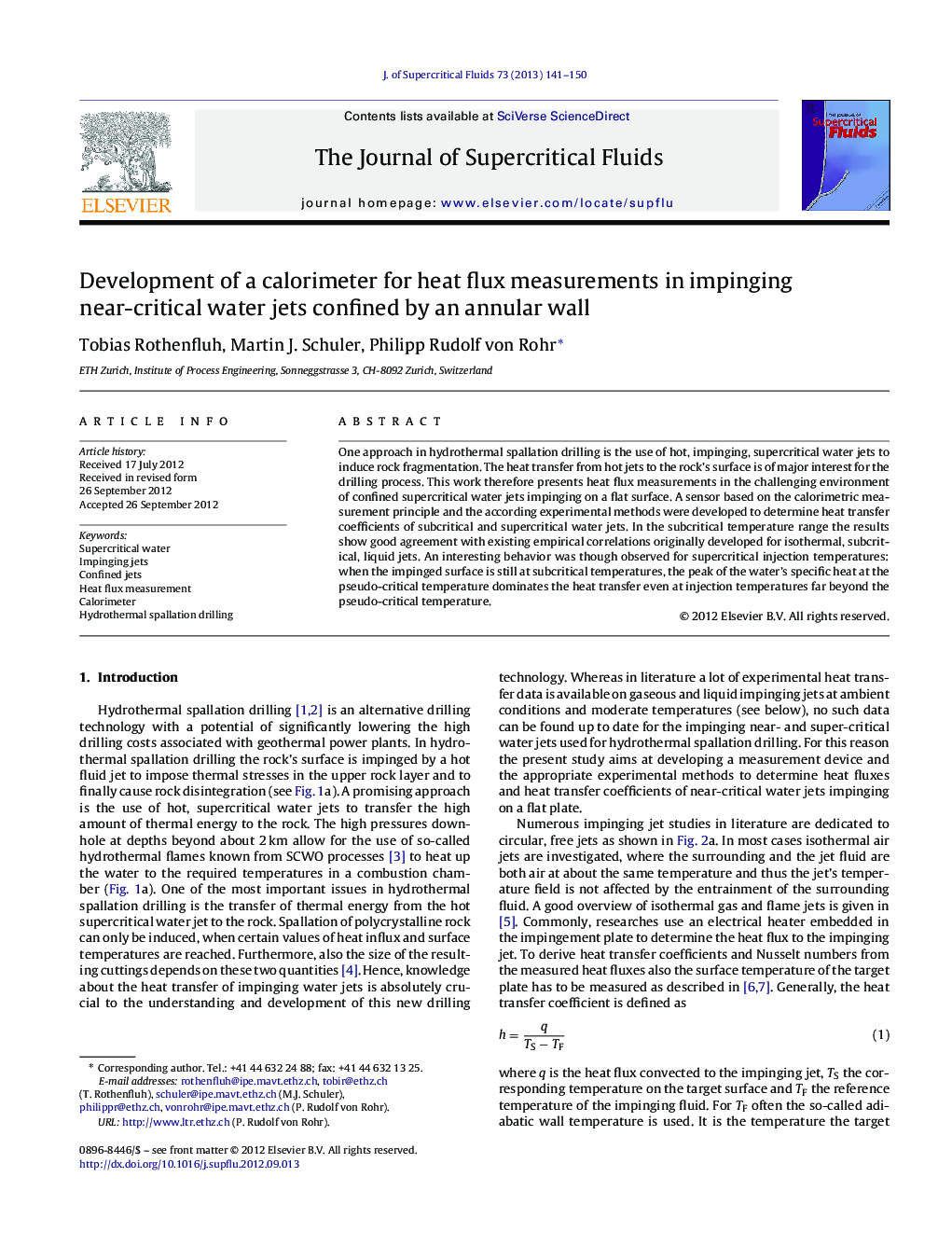| Article ID | Journal | Published Year | Pages | File Type |
|---|---|---|---|---|
| 230672 | The Journal of Supercritical Fluids | 2013 | 10 Pages |
One approach in hydrothermal spallation drilling is the use of hot, impinging, supercritical water jets to induce rock fragmentation. The heat transfer from hot jets to the rock's surface is of major interest for the drilling process. This work therefore presents heat flux measurements in the challenging environment of confined supercritical water jets impinging on a flat surface. A sensor based on the calorimetric measurement principle and the according experimental methods were developed to determine heat transfer coefficients of subcritical and supercritical water jets. In the subcritical temperature range the results show good agreement with existing empirical correlations originally developed for isothermal, subcritical, liquid jets. An interesting behavior was though observed for supercritical injection temperatures: when the impinged surface is still at subcritical temperatures, the peak of the water's specific heat at the pseudo-critical temperature dominates the heat transfer even at injection temperatures far beyond the pseudo-critical temperature.
Graphical abstractFigure optionsDownload full-size imageDownload as PowerPoint slideHighlights► Design of a sensor for measuring heat flux of impinging, near-critical water jets. ► Detailed error analysis of determined heat flux and heat transfer coefficients. ► Results agreed with existing empirical correlations for subcritical temperatures. ► The peak values in the water's specific heat dominated supercritical heat transfer.
